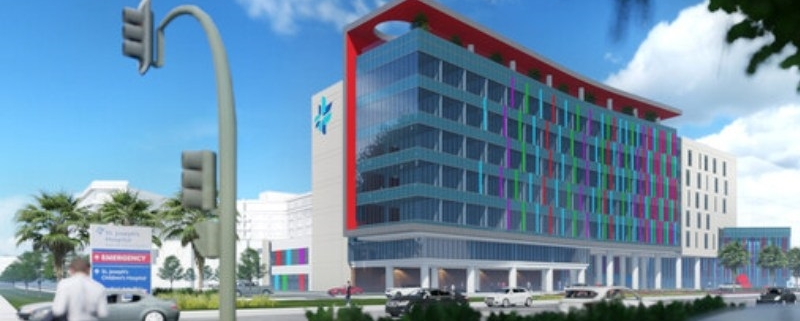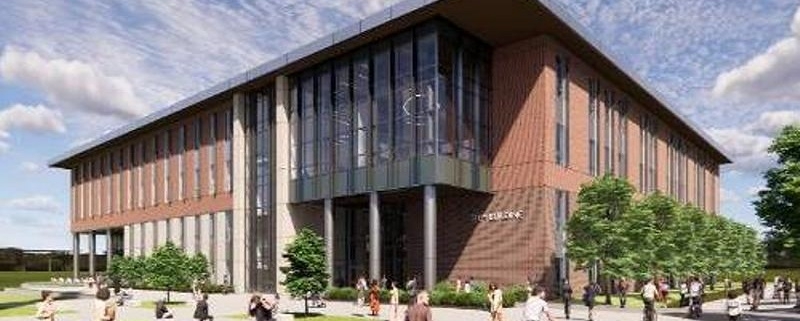New Specially Designed Facility Planned For BayCare’s St. Joseph’s Children’s Hospital In Tampa
BayCare, West Central Florida’s leading health care system, announced that it is planning to build a new, specially designed facility for St. Joseph’s Children’s Hospital in Tampa by 2030 as part of a strategic effort to increase the region’s access to high-quality, state-of-the-art pediatric health care.
BayCare is the region’s largest provider of pediatric services and St. Joseph’s Children’s Hospital (SJCH) is its largest-volume pediatric hospital. The investment in a new facility for the hospital is part of BayCare’s comprehensive plan to enhance local pediatric expertise and to create a destination hospital for high-acuity pediatric services, research and medical innovation for West Central Florida and beyond.
In addition to the capital plan, BayCare will grow its multi-specialty, non-hospital pediatric clinics to improve access to care for patients and their families closer to home. BayCare is planning to expand its pediatric graduate medical education programs, including teaching, research and training to fuel continued medical innovation and help ensure the region continues to attract the best and brightest to practice medicine here.
“From its founding, BayCare has been about serving its communities, who deserve the highest-quality health care,” said BayCare CEO and President Stephanie Conners. “BayCare wants West Central Florida’s children and families to continue to have access close to home to the best in medical care that combines the latest treatment innovations with our unmatched compassionate care. These investments will make that possible.”
From birth — nearly 13,000 baby deliveries in 2022 — to adulthood, BayCare offers everything for children from primary care and specialist physicians to state-of-the-art interventions. Particularly of note is The Daniel J. Plasencia, MD Children’s Chronic Complex Clinic at SJCH, which treats children and supports their families as they face the most challenging of chronic conditions. The clinic has been the role model for federal legislation to encourage such clinics at hospitals across the country. Similarly, a longstanding relationship with University of Pittsburgh Medical Center/Children’s Hospital of Pittsburgh has made SJCH a destination for congenital heart care for children, where there has been great progress in children surviving to adulthood.
The Tampa hospital also is home to St. Joseph’s Children’s Hospital Steinbrenner Emergency/Trauma Center with the region’s largest team of board-certified pediatric emergency physicians. The state-designated pediatric trauma center provides the highest level of care for children.
“In health care, to stand still is not an option when medical innovation is providing new opportunities every day to impact our patients’ lives,” said Sarah Naumowich, president of St. Joseph’s Children’s and Women’s hospitals. “We are investing in our region’s future, its children, to help them be as healthy as possible.”
The St. Joseph’s Children’s Hospital Foundation is planning a philanthropic campaign to support the new hospital facility. Currently the hospital is adjacent to St. Joseph’s Hospital and shares some common spaces. By building a new, dedicated structure, the pediatric hospital will be able to further evolve specialty care and research dedicated to children’s health and the support of their families.
“The best pediatric care is family-centered care that treats the child but also supports those who love and care for them,” Naumowich said. “A new facility will allow us to do that even better, marrying the best in medical innovation and options in an environment built to the needs of patients and families.”
A new SJCH facility would be the fourth new hospital project BayCare has undertaken in the past five years. BayCare has already announced plans to build its 17th hospital in fast-growing Manatee County, where the health system has already opened BayCare Medical Group offices. BayCare opened its 16th hospital, BayCare Hospital Wesley Chapel, in March 2023 and will open a replacement facility for South Florida Baptist Hospital in Plant City in early 2024.
“Our growing region deserves the very best in health care and BayCare is committed to continuing to be the leader in serving our communities’ youngest patients,” Conners said.




